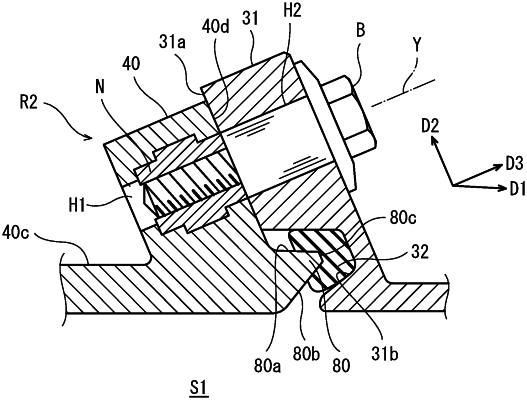| CPC F16H 57/035 (2013.01) [F16H 9/14 (2013.01); F16H 57/029 (2013.01); F16H 57/031 (2013.01); F16H 2057/02043 (2013.01)] | 9 Claims |

|
1. A waterproof case comprising:
a case main body including an accommodating space and an opening through which the accommodating space is open;
a cover that closes the opening;
a sealing member interposed between the case main body and the cover; and
a fastener by which the cover is fastened to the case main body, wherein:
a specific member that is the case main body or the cover includes a bottom wall and a peripheral wall that projects from the bottom wall in a predetermined die pull-out direction and includes a circumferential contact surface;
the contact surface is a surface extending along a predetermined oblique direction inclined relative to a perpendicular plane orthogonal to the die pull-out direction;
the peripheral wall includes a first region arranged at one side in the oblique direction and a second region arranged at the other side in the oblique direction, a projection amount of the second region from the bottom wall being smaller than a projection amount of the first region from the bottom wall;
an axis of the fastener extends in a normal direction that is inclined relative to the die pull-out direction and perpendicular to the contact surface;
the specific member includes a circumferential projection that projects from the contact surface in the die pull-out direction, is arranged circumferentially along the contact surface, and presses the sealing member;
the circumferential projection includes an outer peripheral side surface and an inner peripheral side surface;
in the first region, the circumferential projection has a tapered section in which the outer peripheral side surface is inclined relative to the die pull-out direction; and
in the second region, the circumferential projection has a tapered section in which the inner peripheral side surface is inclined relative to the die pull-out direction.
|